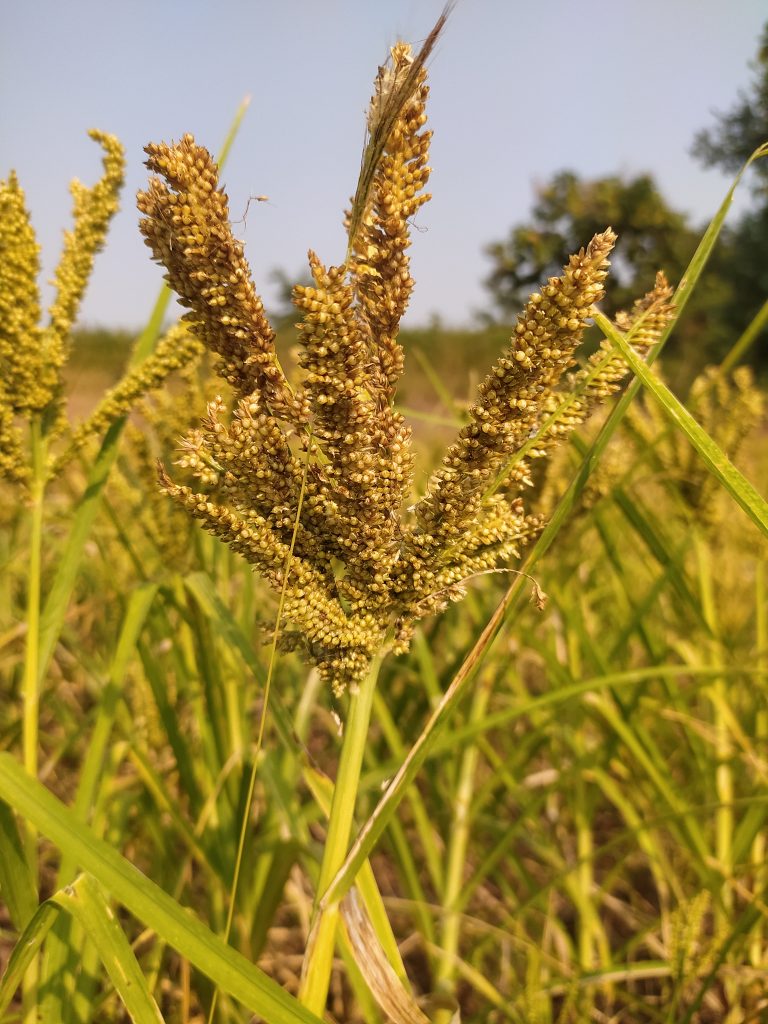
Millet
Panicum miliaceum
Basic Information
🌿 Family: Poaceae🗺️ Zone: 2-11
Other Names:
- Proso Millet
- Broomcorn Millet
- White Millet
🌡️ Ideal Temperature : 70°F – 90°F
🔥 Heat Tolerance: Up to 100°F
❄️ Cold Tolerance: Down to 50°F
🌱 Type: Annual
Layers
- Herbaceous
Functions
- Edible
- Animal Fodder
- Erosion Control
- Ground Cover
Pests
No pests associated with this plant.
Description
Millet (*Panicum miliaceum*) is a hardy, fast-growing annual grass that reaches heights of 0.5 to 1.5 meters (1.6 to 5 feet). It features slender, erect stems with broad, lanceolate leaves approximately 30 to 50 centimeters (12 to 20 inches) long. The plant produces loose, open panicles bearing small, rounded grains that can vary in color from white and yellow to red and brown. Millet is well-adapted to a range of soil types, including sandy and loamy soils, and is notably drought-resistant, making it suitable for regions with low water availability.
✂️🫘 Methods to Propagate:
Millet is propagated by direct seeding. Sow seeds at a depth of 1.5 to 2.5 centimeters (0.6 to 1 inch) in well-drained soil after the last frost when soil temperatures are consistently above 15°C (59°F). Seeds typically germinate within a week under optimal conditions.
🌞💧 Sun and Water Requirements:
Millet thrives in full sun and prefers well-drained, neutral to slightly acidic soils. While it is drought-tolerant once established, consistent moisture during germination and early growth stages promotes optimal development. Avoid waterlogged conditions, as they can impede growth.
🧑🌾👩🌾 When to Harvest:
Harvest millet grains when the seed heads have matured and turned a golden-brown color, typically 60 to 90 days after planting. Cut the stalks and allow them to dry before threshing to separate the grains from the chaff.
Purpose
In permaculture, millet serves multiple functions:
- Edible: Provides nutritious grains rich in essential amino acids, suitable for human consumption in various culinary applications.
- Animal Fodder: Serves as forage for livestock and poultry, offering a valuable feed source.
- Erosion Control: Its fibrous root system helps stabilize soil, reducing erosion on slopes and degraded lands.
- Ground Cover: Acts as a cover crop, suppressing weeds and enhancing soil organic matter.